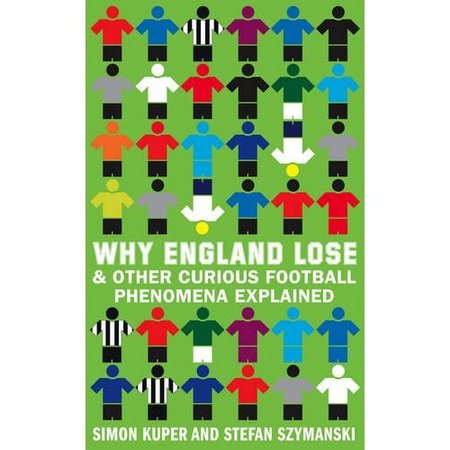
“Just this one afternoon started the whole thing off – there was no prolonged courtship … In a desperate and percipient attempt to stop the inevitable, Dad quickly took me to Spurs to see Jimmy Greaves score four against Sunderland in a 5-1 win, but the damage had been done, and the six goals and all the great players left me cold: I’d already fallen for the team that beat Stoke 1-0 from a penalty rebound.”
Nick Hornby in Fever Pitch (1992) on the origin of his lifelong love of Arsenal.
Simon Kuper writes in an excerpt of his new book Why England Lose (written with sports economist Stefan Szymanski) that the quintessential football fan made famous by Hornby, the monogamous blue collared fan who professes undying allegiance to one club is a romantic myth. The fan is more likely to treat the club like a brand creating a shiftier association. He might actually, heavens forbid, support more than one club at a time earning Hornby’s sobriquet of a “sod-that-for-a-lark floating punter”.
Kuper analyzes fan attendances and finds the attrition rate very high. 50% of the fans never make it back for one reason or the other. However the Hornby stereotype persists. There are sociological reasons for this phenomenon.
“In a country that is unusually rootless, this account of fandom tells a story of roots, of belonging – a lifelong love of the club your father or grandfather supported before you.”
The British working class has moved on. Changed the nature of their jobs and addresses, disconnected from their antecedents. No other country in Europe felt the changes of the Industrial Revolution wrought as viscerally as did England and no other country felt its dismantling effects as keenly as huge swaths of textile and steel mills disappeared from the hinterland. A generation of Britons entered colleges and universities in the 1960s finding work in a new economy, relocating to different towns and cities with which they might have very little previous connection. Unless you are a Hull City fan where the address of the Industrial Revolution and the new economy coincide.
That well maybe. But going to a football game is far more canned than it previously was. There are limits to the sort of behaviour that used to be prevalent in the 70s and 80s. The game has been taken over by corporate sponsors who have added so many more embellishments that it is hard to figure out what drives fan attendances. Is it the prawn sandwiches or the type of beer? The credit card offered by Man Utd? Shifting through all this and gleaning kernels of true allegiance is tough.
The book is supposed to be football’s version of Moneyball, the tome that gave us an inside looks into Billy Beane’s novel approach to baseball using statistical analysis to improve the Oakland Athletics from a small club with a motley crew of talent to perennial winners. It led to a revolution as sports could now use inexpensive talent and rely less on X factors like work ethic and camaraderie by using data sets of baseball statistics to achieve dramatic improvement. Basically, number crunchers converged in backrooms of every baseball establishment to pour over SPSS data sets of every baseball statistic possible and come up with various regression models to explain variance and rule out chance. Soon everyone was using it, from college basketball to the NFL. leading to a glut in the pathway to the playoffs. That is where it all ended as the playoffs itself became a model for human error.
However as this review points out, football unlike baseball or NFL, is hard to break up into discrete data points because of the nature of the game. There is software like ProZone to chop up sequences but it remains imperfect. Thus, football is as yet a statistically impoverished sport. The most one can do is analyze penalty kicks. Which is why rich clubs stack their squads with high priced stars because it increases the chances of a win whereas X factors like work ethic and camaraderie although hard to measure is what makes football so much more compelling than watching fat bottomed sluggers amble around bases after hitting a homerun. Somewhere in a university lab for hard science, Barry Bonds work has been made easier by a number cruncher.
3 comments on “Simon Kuper’s new book: Why England Lose”
Sorry to nitpick, the Oakland A’s (my backyard team) weren’t a small club when Beane started. The reverse has actually happened under Beane, we sell our best players on a regular basis to keep the books balanced.
This is a great site, I’ve been reading it for a couple of years now-keep up the good work!
Harsh, I think they were talking about the A’s having the smallest payroll. Anyways, thanks for reading soccerblog and the vote of confidence.
It’s been interesting to see baseball evolve since Moneyball came out. Upon publication, only the cash poor teams were playing moneyball (indeed, that was the whole point of the book), and the rich teams were signing the same over the hill sluggers and overpriced pitchers. But nowadays, the rich teams play it too, so they discover the same players the A’s do, except they can afford to pay those players 3X as much. We are, in essence, back to the starting point, where the cash poor teams can’t compete with the big boys.
The only exception I can think of is the Tampa Bay Rays, but I think that team is just owned and run by people much smarter than most in baseball (their GM in fact came from a finance background rather than a baseball one).